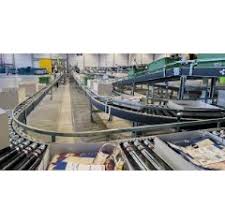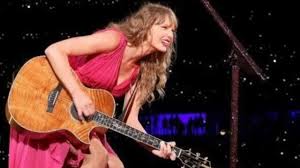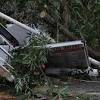Who owns the Panama Canal and what does Trump want with it?

 View image in fullscreen
View image in fullscreen
Who owns the Panama Canal and what does Trump want with it?
US president-elect has threatened to retake canal over ‘exorbitant’ rates but Panama’s president rejects his claims
Donald Trump has threatened to take over the Panama Canal, but what is the waterway and why is it so important?
Here’s what you need to know.
What is the Panama Canal?
The canal is a major waterway connecting the Atlantic and Pacific oceans, allowing sea travellers to avoid an additional 7,000 nautical miles (13,000km) around the tip of South America.
The 51-mile (82km) canal cuts through the middle of Panama, a country occupying the strip of land between Central America and South America.
In the year to 30 September, almost 10,000 ships passed through the canal, carrying 423m tons, including food, minerals and factory-made products. More than 40% of consumer goods traded last year between north-east Asia and the US east coast were transported through the canal.
The US is the canal’s biggest customer, responsible for about three-quarters of the cargo moving through it each year, while China is the second-biggest customer.
Who owns the canal?
The government of Panama has owned and operated the canal through a dedicated agency, the Panama Canal Authority, for 25 years.
The US operated the canal during the 20th century, taking control of the canal zone and beginning construction in 1904 after helping Panama win independence from Colombia. The canal opened in 1914, revolutionising global shipping and allowing thousands of cargo freighters and American battleships to pass through each year.
US control of the canal and the exclusion of Panamanians created tensions between locals and US visitors, prompting authorities to erect a wall between Panama City and the canal zone in the 1950s.
On 9 January 1964, a major protest broke out and 28 people were killed in the ensuing repression by the authorities, sparking international outrage and encouraging US strategists to abandon the canal. In 1977, the US president, Jimmy Carter, and the Panamanian leader Omar Torrijos signed two treaties to phase out US control of the canal.
After a period of joint administration, marred by a 1989 US invasion to overthrow the military leader Manuel Noriega, Panama took full control of the canal in 1999.
What does Trump want with it?
Trump has demanded that Panama return the canal to the US unless it manages the waterway in a fashion he considers acceptable.
The US president-elect took issue with what he described as the “exorbitant” rates that the US government, navy and businesses were charged for using the passage.
“The fees being charged by Panama are ridiculous,” he wrote. “This complete ‘rip-off’ of our country will immediately stop.”
Ships using the canal must pay fees set by the canal authority. Variable rates have soared in recent years amid droughts worsened by global heating, which dry up essential reservoirs and reduce the canal’s capacity.
As a result of severe drought in late 2023, only 22 ships crossed the canal each day instead of the usual 36, forcing ships to queue for weeks or pay as much as $4m (£3.2m) to jump ahead. Transits fell by nearly a third in the year to this September.
The canal authority has allowed rising numbers of ships to use the canal over 2024, easing congestion, but will increase charges and introduce some additional fees on 1 January 2025. Panama’s president, José Raúl Mulino, said the canal’s transit fees were not inflated.
Trump also warned he would not let the canal fall into the “wrong hands” and appeared to suggest China was exerting influence over it. A Chinese company based in Hong Kong controls two of the five ports adjacent to the canal, one on each side, but Mulino said Panama had full control of the canal.
“Every square metre of the Panama Canal and its adjacent zones is part of Panama, and it will continue to be,” he said in a video statement on Sunday.
Additional reporting by Drew Reed, Edward Helmore and Jonathan Yerushalmy
- Panama
- Donald Trump
- US foreign policy
- Americas
- International trade
- explainers


 United Kingdom
United Kingdom Argentina
Argentina  Australia
Australia  Austria
Austria  Brazil
Brazil  Canada
Canada  Germany
Germany  Ireland
Ireland  Italy
Italy  Malaysia
Malaysia  Mexico
Mexico  New Zealand
New Zealand  Poland
Poland  South Africa
South Africa  United States
United States 


































